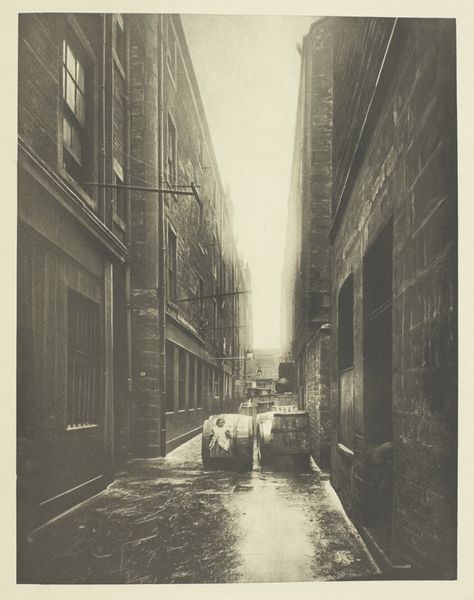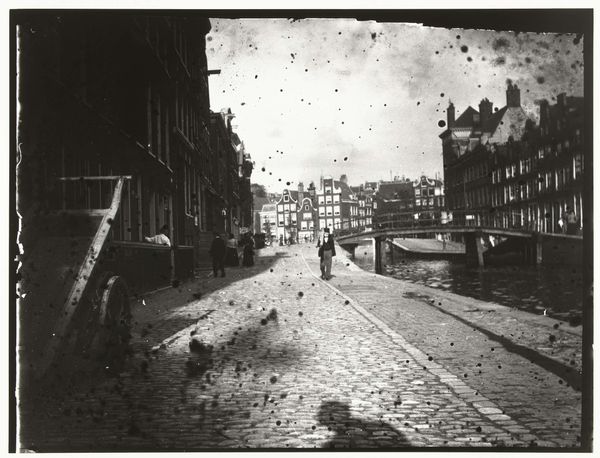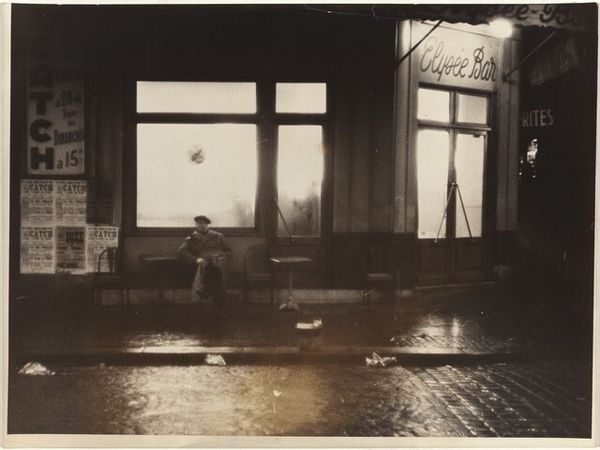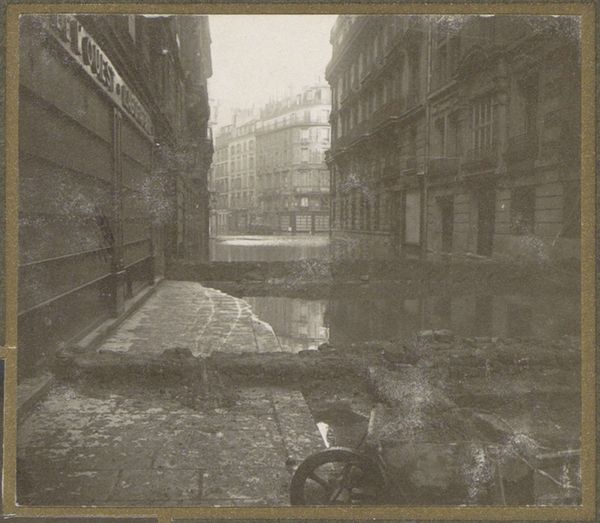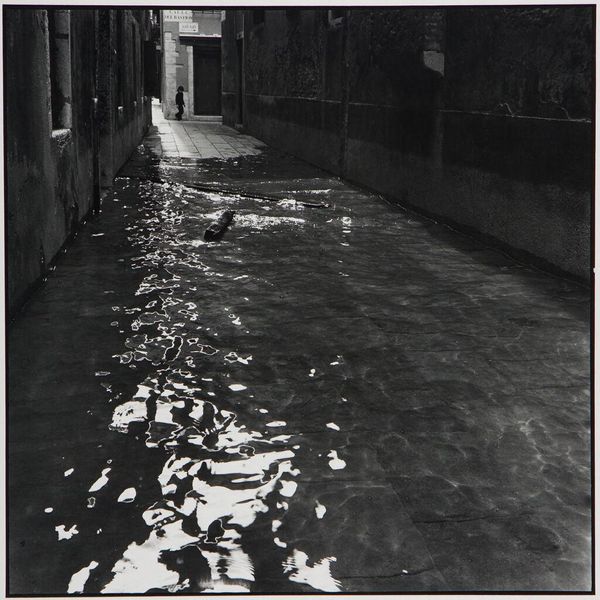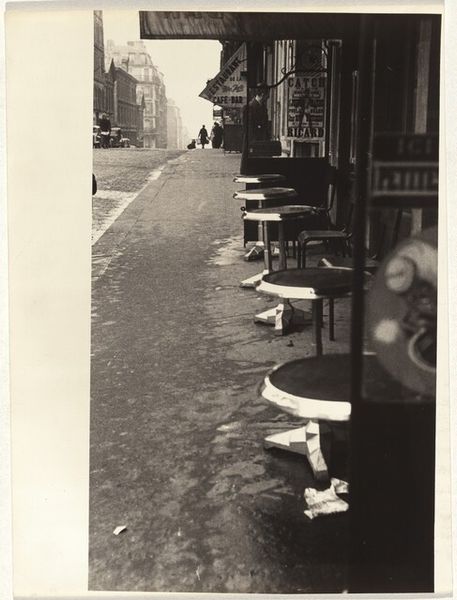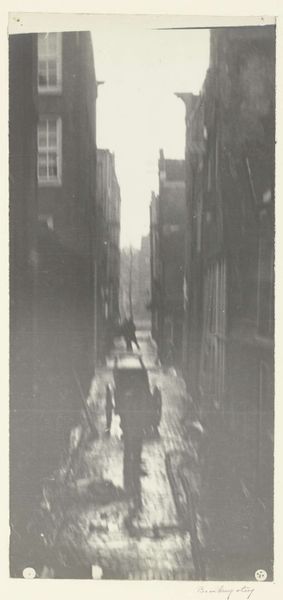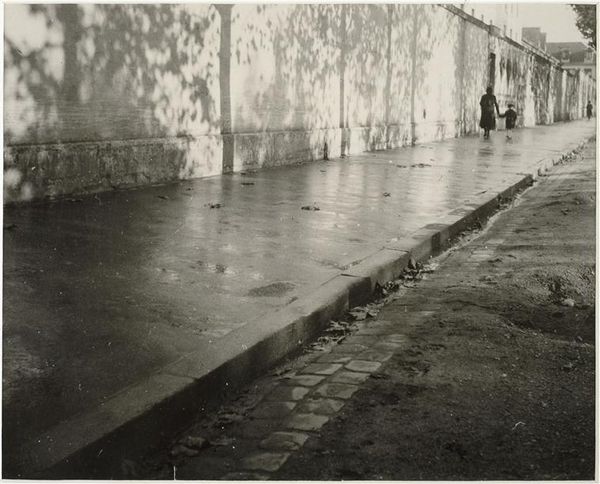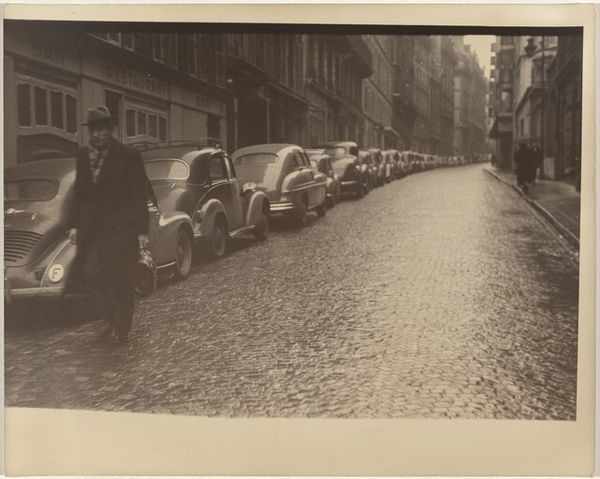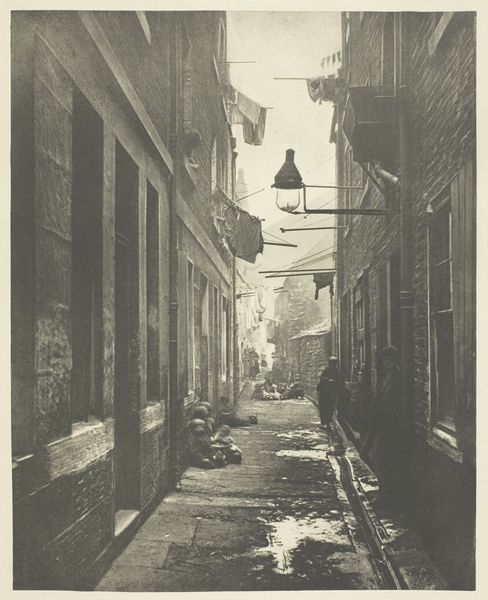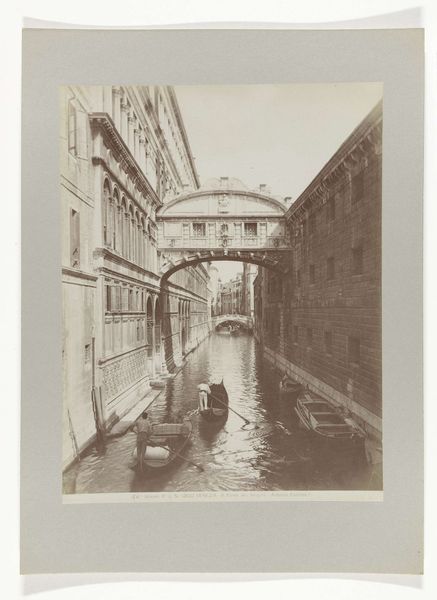
Dimensions: sheet: 20.2 x 25.3 cm (7 15/16 x 9 15/16 in.)
Copyright: National Gallery of Art: CC0 1.0
Curator: Robert Frank's gelatin silver print, "Wet street, Paris," made in 1951, presents a rather somber depiction of urban life. What is your initial reaction? Editor: A profound sense of loneliness, honestly. The rain-slicked street reflects a muted world, with a few distant figures trudging through it, hinting at larger feelings. The potted plant becomes symbolic, doesn't it? An urban offering for the gods of life? Curator: That may be a function of the ambient lighting, since Frank uses a fairly narrow depth of field and soft focus. In terms of visual structure, I see a powerful receding perspective created by the converging buildings and street lines, almost swallowing the human figures. The foreground nearly dissolving into greyscale tones gives a stark contrast. Editor: Yes, exactly! And the human figures contribute to this. Their anonymity speaks to the alienation often associated with city life. Rain has cleansing and destructive features, psychologically—it could also hint to cultural shifts and individual transformations post-war. Curator: Do you think the very limited tonal range might symbolize this feeling of hopelessness? He is making use of chiaroscuro and it definitely directs your sightlines. I mean, in terms of photographic language, look at how light reflecting on the wet pavement becomes another character, subtly shifting. Editor: Without a doubt, the limited tones highlight the symbolism here. And considering the historical moment, that tonal dampness, reflects Europe grappling with post-war recovery. There is so much in common with images of concentration camps for many viewers, of course on a completely different level of magnitude... Curator: Frank's framing definitely forces our perspective to follow the receding street. Even small, the geometric architecture acts as symbolic barriers further enhancing feelings of social alienation and barriers between individuals. Editor: It is an atmospheric masterpiece. The longer I look at it, the more I sense it goes far beyond just pure city aesthetics. Curator: I concur; it embodies formalism perfectly. An objective yet profound examination of urban structure! Editor: Yes, for me, its impact extends past what formalism conveys, making it a visual document connecting psychological and societal layers.
Comments
No comments
Be the first to comment and join the conversation on the ultimate creative platform.
